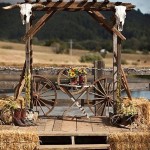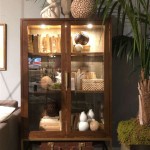How To Decorate a Food Table for a Wedding Reception
A well-decorated food table is a focal point of any wedding reception. It's where guests gather to nourish themselves and socialize, making its presentation crucial for setting the right tone and enhancing the overall aesthetic of the event. Careful planning and attention to detail can transform a simple buffet or serving station into a visually appealing and functional centerpiece.
The first step in decorating a wedding reception food table is establishing a cohesive theme. This theme should complement the overall wedding décor, whether it's rustic, elegant, bohemian, or modern. Once the theme is established, one can begin to consider the specifics of the table décor, including linens, centerpieces, and servingware.
Table linens play a significant role in setting the tone and creating a cohesive look. Consider the formality of the event when choosing linens. Formal receptions often call for crisp white or ivory tablecloths and napkins, while more casual affairs might benefit from textured linens in softer hues or patterns. A table runner can add a pop of color or texture and help tie the table décor together. Ensure the linens are clean, pressed, and appropriately sized for the tables.
Centerpieces are another essential element of food table décor. While elaborate floral arrangements can be stunning, they should not obstruct guests' access to the food or impede conversation. Low, compact arrangements are generally preferred for food tables. Alternatives to traditional floral centerpieces include candles, lanterns, or decorative objects that reflect the wedding theme. For example, a rustic wedding might feature centerpieces made from wood slices and mason jars filled with wildflowers, while a beach-themed wedding could incorporate seashells and driftwood.
Servingware contributes significantly to the table's aesthetic appeal. Matching chafing dishes, platters, and serving utensils create a polished and professional look. Consider the style and material of the servingware to ensure it complements the overall theme. For instance, silver or gold chafing dishes add a touch of elegance, while rustic wooden platters enhance a more casual setting. Clearly labeled food cards are not only practical but also add a professional touch and help guests navigate the buffet efficiently.
Lighting plays a crucial role in showcasing the food and creating an inviting atmosphere. Warm, ambient lighting is generally preferred for food tables. String lights, lanterns, or strategically placed spotlights can highlight the food and create a visually appealing display. Avoid harsh overhead lighting, which can cast unflattering shadows and detract from the presentation.
The arrangement of the food itself is a key aspect of food table decoration. Items should be arranged logically and attractively. Consider the height and placement of each dish to create visual interest and facilitate easy access for guests. Varying heights can be achieved using cake stands, tiered platters, or decorative boxes. Grouping similar food items together also helps guests navigate the buffet more easily.
Garnishes and decorative elements can elevate the presentation of the food. Fresh herbs, edible flowers, or fruit slices can add a pop of color and enhance the visual appeal of dishes. Small decorative touches, such as strategically placed candles or scattered flower petals, can further enhance the overall aesthetic of the table. However, it is important to ensure that all decorative elements are food-safe and do not come into direct contact with the food.
Signage is an essential yet often overlooked element of food table décor. Clearly labeled signs indicating the names of dishes and any potential allergens are crucial for guest safety and convenience. The style of the signage should complement the overall wedding theme. Calligraphed signs on elegant cardstock are appropriate for formal events, while chalkboard signs or rustic wooden signs can enhance a more casual setting.
Maintaining the cleanliness and tidiness of the food table throughout the reception is essential. Designate a staff member or a responsible friend or family member to replenish food, clear used plates, and maintain the overall presentation of the table. This will ensure that the food table remains an attractive and inviting focal point throughout the event.
Finally, consider the flow of traffic around the food table. Ensure ample space for guests to move comfortably and access the food without crowding. If space allows, consider setting up multiple smaller food stations rather than one large buffet. This can help reduce congestion and create a more relaxed dining experience for guests.
Careful planning and attention to detail can transform the food table into a visually stunning and functional centerpiece of the wedding reception. By considering the elements of theme, linens, centerpieces, servingware, lighting, food arrangement, garnishes, signage, and traffic flow, one can create a memorable dining experience for guests.

Guide To Decorating Food Tables Lds Wedding Receptions
:max_bytes(150000):strip_icc()/justina-jordan-wedding-346-8eb1b31d061d47b6a471f49f8fb8dc08.jpg?strip=all)
17 Grazing Table Ideas For A Gorgeous Spread

Photo Via Project Wedding Buffet Table Receptions Reception Food

Wedding Reception Food Ideas Backyard Snacks

70 Best Wedding Buffet Tables Ideas Food
:max_bytes(150000):strip_icc()/table-setting-x-1-12696a3e755e436e818bea3547bacedd.jpg?strip=all)
Wedding Table Ideas

Photo Gallery Reception Table Wedding Food Tables

Ideas For Buffet Food Table Decoration Cv Linens

How To Decorate Your Wedding Dessert Table Texoma Bride Guide

Food Table Decor Wedding Reception Buffet Decorations
Related Posts







